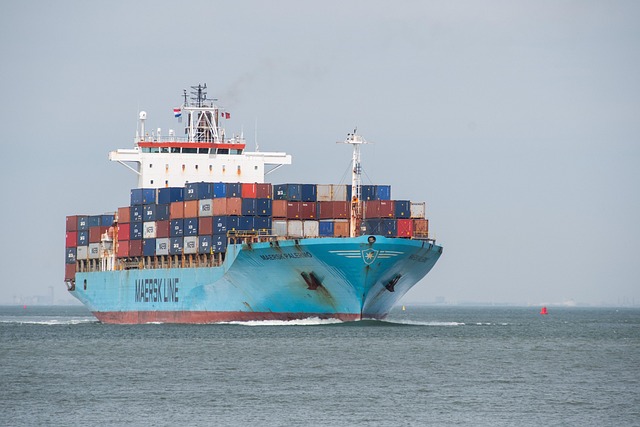What to Do If Your Shipment Is Seized by Customs? A Crisis Resolution Plan for Importers
A customs seizure is a high-stakes emergency. Daily demurrage and storage fees accumulate, sales opportunities vanish, and business relationships strain. This step-by-step plan provides importers and e-commerce sellers in the US, UK, EU, Canada, and Australia with a clear framework to manage the crisis, limit financial loss, and recover your goods.
1. Immediate Containment: Stop the Clock
The Problem:
Every hour of inaction increases costs and reduces your options for release. A disorganized response can lead to conflicting instructions and forfeited opportunities.
The Solution:
Confirm the Status: Immediately obtain the seizure notice number, the reason for hold (e.g., documentation, prohibited goods), and the assigned customs contact.
Assign an Incident Owner: Designate one person internally to manage all communications and decisions.
Notify Your Partners: Alert your customs broker and carrier instantly. Centralize all communication into a single thread.
Preserve Evidence: Photograph seals, packaging, and cargo if possible. Secure all original documents and records.
Client Case:
A UK importer faced a detention for suspected misclassification. By immediately appointing a single point of contact and halting all ad-hoc decisions, they preserved their options and avoided costly, unnecessary repacking.
2. The 1-Hour Document Audit: Find the Root Cause
The Problem:
Most seizures stem from fixable errors: incorrect invoices, wrong HS codes, missing licenses, or undervaluation. A rapid audit identifies the issue so you can fix it.
The Solution:
Conduct an Audit: Within one hour, review the commercial invoice, packing list, bill of lading, licenses, certificates, and prior filings (ISF/ENS).
Compare Line-by-Line: Check for mismatches between the manifest and invoice regarding quantities, weights, values, and HS codes.
Gather Corrective Evidence: If the error is minor, prepare corrected documents or obtain missing certificates from suppliers immediately.
Client Case:
A North American retailer identified a missing license during their 1-hour audit. The supplier provided the digital certificate within hours, and the broker filed an amended entry, securing release in less than a day.
3. Broker & Legal Escalation: Leverage Expert Channels
The Problem:
Customs authorities respond to structured, professional escalation. Using the wrong channel or sequence wastes precious time and money.
The Solution:
Engage Your Broker First: Have them open formal channels with customs to request a conditional release or an inspector’s meeting.
Involve Legal Counsel Early: If the seizure alleges fraud, IP infringement, or serious safety violations, immediately engage a customs lawyer to protect your rights and prepare appeals.
Negotiate Interim Measures: Explore options like partial release of non-problematic goods or a supervised inspection to reduce demurrage costs.
Client Case:
An EU importer accused of shipping counterfeit components had their broker negotiate the release of non-suspect SKUs. This allowed partial sales to continue while their legal team resolved the broader allegation, avoiding a total loss.
4. Evaluate Your Recovery Options
The Problem:
Each path forward—release, appeal, re-export, or destruction—has significant cost and time implications. Choosing the right one requires a swift, data-driven decision.
The Solution:
Triage by Value: For urgent, high-margin items, consider a partial air shipment if permitted.
Consider Immediate Release: Often, paying duties or penalties under protest (reserving your right to appeal) is the fastest way to secure release.
Cut Your Losses: For low-value or non-compliant goods, negotiated supervised destruction or re-export may be the most cost-effective solution.
Appeal the Decision: If you have strong evidence, file an appeal immediately within the legal deadline while simultaneously preparing a contingency plan.
Client Case:
A Canadian importer paid contested duties under protest to release a container quickly for a sales season, while simultaneously appealing the decision. They later won the appeal and recovered the funds.
5. Implement Post-Incident Controls
The Problem:
Without learning from the event, you are doomed to repeat it. Failing to update procedures and supplier agreements leaves you exposed.
The Solution:
Conduct a Post-Mortem: Within a week, analyze the root cause, decisions made, and total costs.
Update Supplier Contracts: Mandate correct HS codes, certificates, and pre-shipment photo evidence in all new agreements.
Embed the Playbook: Formalize this crisis plan into your company’s SOPs, including defined roles and pre-approved contingency budgets.
Track KPIs: Monitor seizure frequency, average resolution time, and costs to identify recurring issues.
Client Case:
After a seizure, a retailer mandated photographic proof of packing and supplier attestations for all future orders. This simple step reduced seizures for that product category to zero.
We Manage Customs Crises
A seizure doesn’t have to be a catastrophe. Our network of experienced brokers and legal partners can act immediately to contain the situation, negotiate release, and guide your appeal, turning a potential disaster into a manageable incident.
Need Immediate Help? Get a Free Crisis Plan
If your shipment is seized, time is money.
Click here to schedule an emergency consultation.
Email your seizure notice and details to Hxin80377@gmail.com. We will immediately provide a lane-specific recovery plan, cost estimates, and a checklist to start the resolution process.
Related Posts
How to Solve US Customs Clearance Delays & Avoid Penalties
How to Solve US Customs Clearance Delays & Avoid Penalties…
Customs Clearance Problems and Solutions: A Complete Guide for Importers
Customs Clearance Problems and Solutions: A Complete Guide for Importers…
EU Customs Clearance After Brexit: Key Rules to Avoid Penalties
EU Customs Clearance After Brexit: Key Rules to Avoid Penalties…
